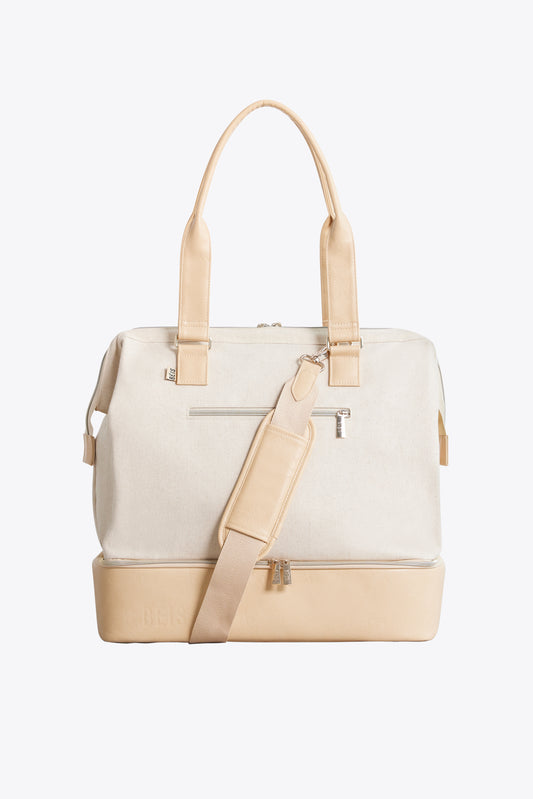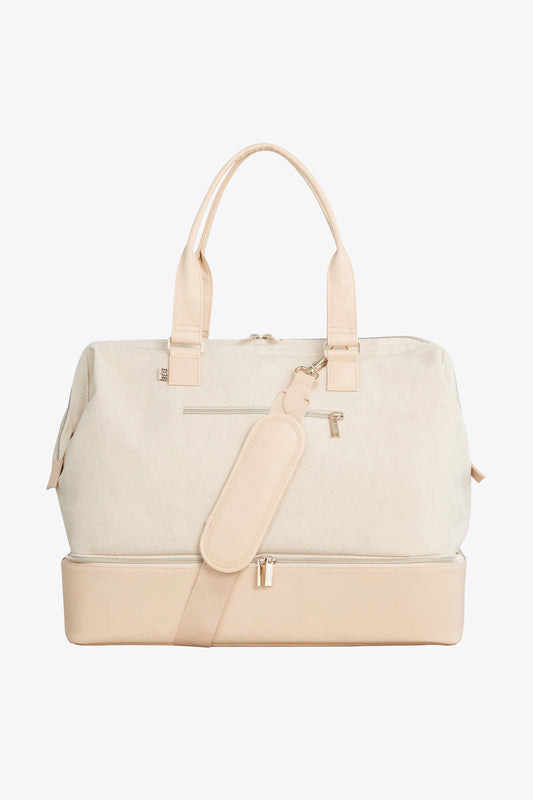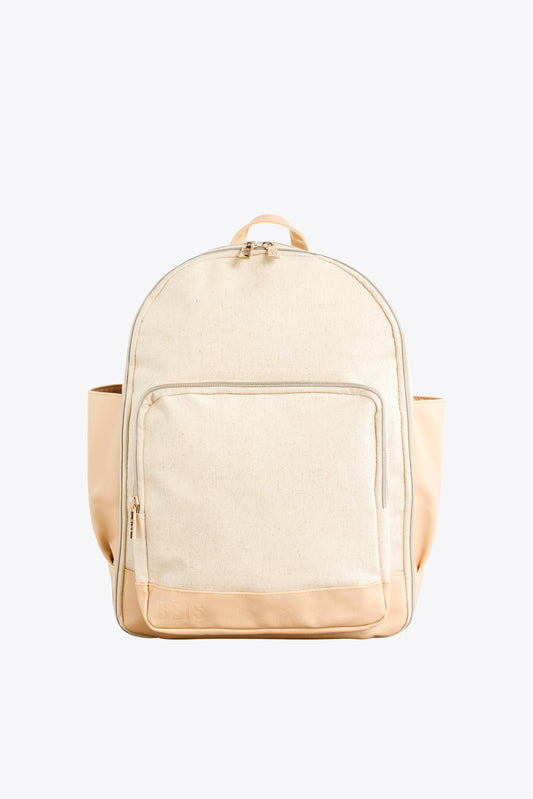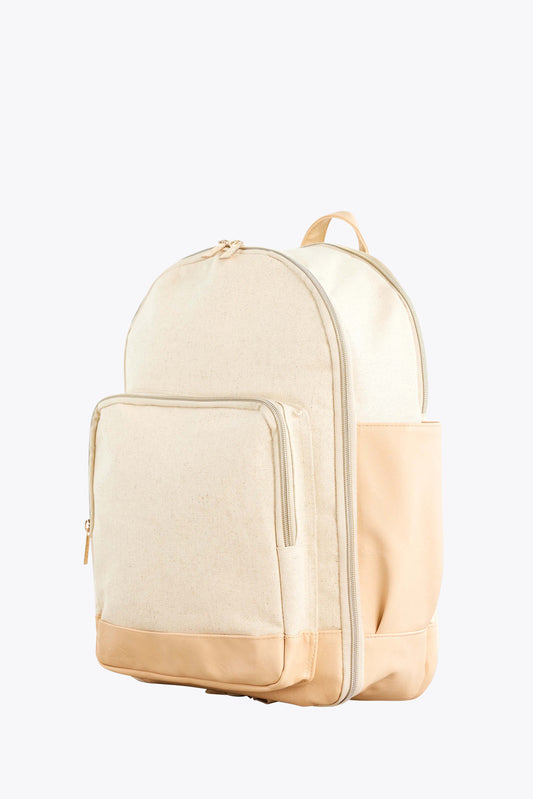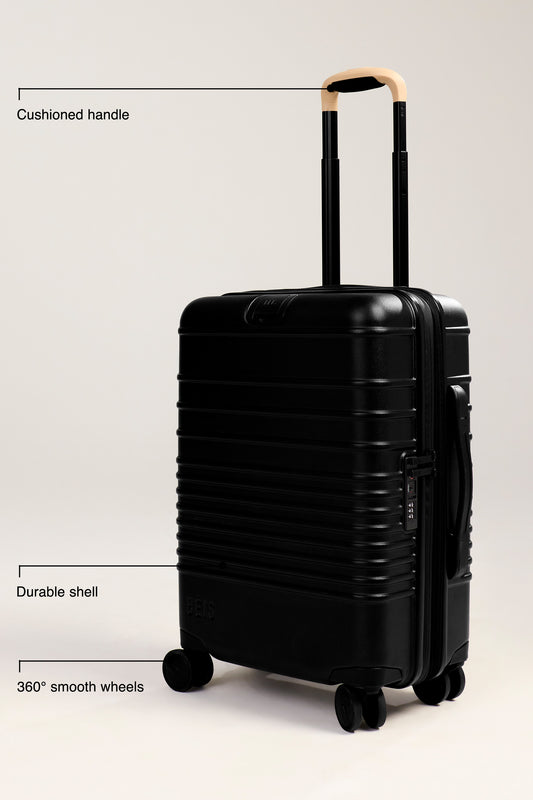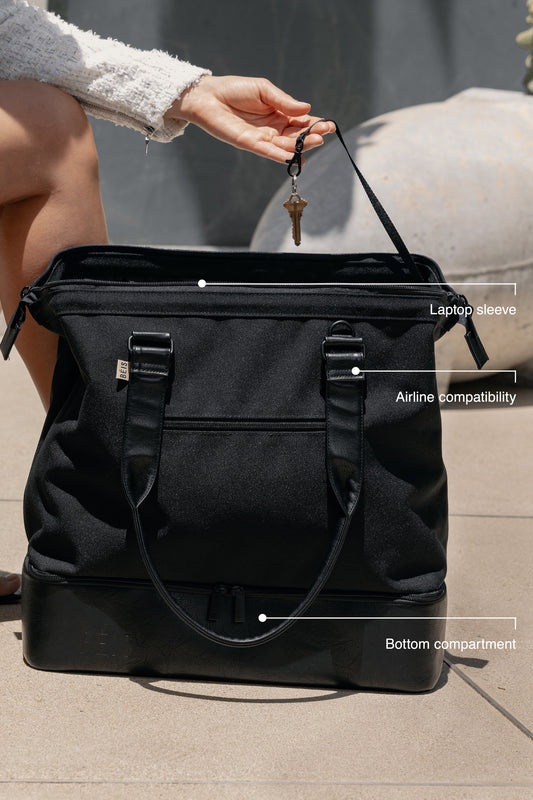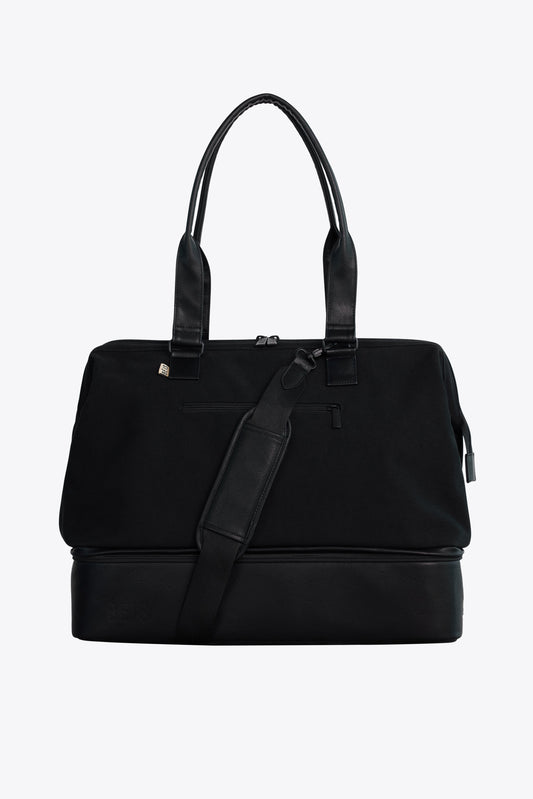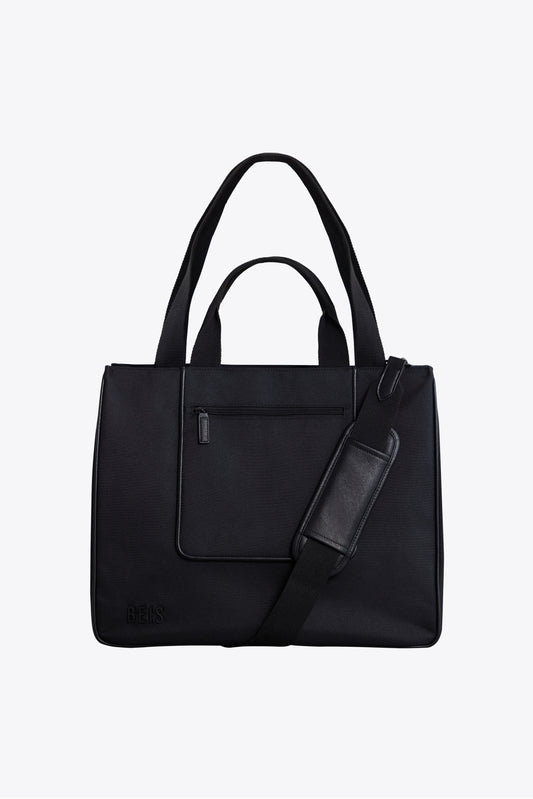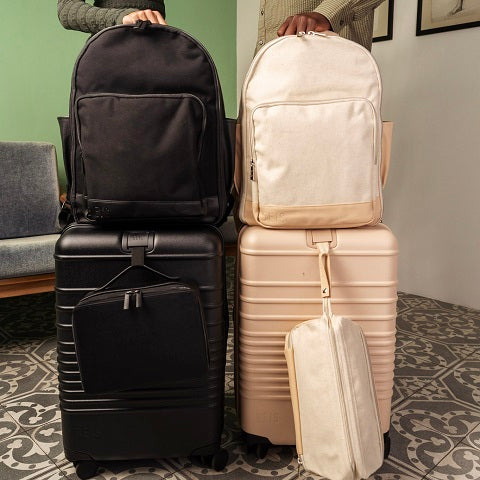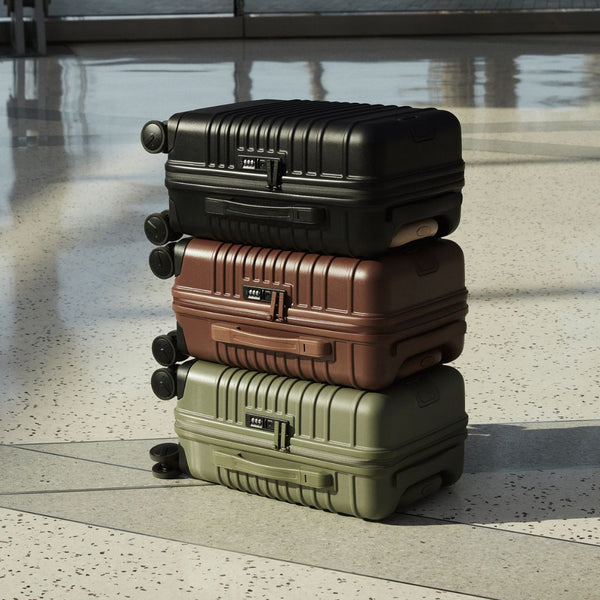BacWe’ve all been there—you’re just about to enter the jet bridge when a flight attendant suddenly stops you at the threshold. Turns out, your large and small duffel can’t both come onboard. You need to pick just one carry-on bag. Ugh.
In this world of basic economy and baggage fees, every inch counts. International and domestic airlines have upticked baggage regulations in an effort to save space for every flyer. So when packing for that next weekend getaway, you might be left wondering—what is the difference between a carry-on vs. personal item?
Don’t check that small bag or suitcase just yet. We can help you avoid the checked baggage carousel with our complete guide to all hand luggage.
What Counts as a Carry-On?
Once upon a time, carry-on bags were an included feature. But as airlines have maximized space, they’ve cut down on hand baggage options for passengers. Can you still store your favorite mid-size duffel overhead on your flight?
Today, the art of the carry-on bag (or cabin bag) comes down to sizing and seat class. Let’s explore which pieces of your luggage collection can make it onboard during your next trip.
Size Standards
Nearly every airline has sizing limits for its carry-on bags. Why? Without regulations, oversized bags would take up way too many inches and pounds on the plane. Standardized sizes allow more passengers to fit their carry-on bags in the overhead compartment safely.
However, most airlines have their own unique dimension and weight requirements.1 When in doubt of which type of luggage to choose, go for a carry-on that’s slightly smaller. That way, fewer airlines can restrict your options. For an idea of sizing, take a look at these major airline limits:
- American Airlines – 22” x 14” x 9” (no weight limit)
- Delta Airlines – 22” x 14” x 9” (no standardized weight limit)
- Frontier Airlines – 24” x 16” x 10” and 35 lbs.
- JetBlue Airlines – 22” x 14” x 9” (no weight limit)
- Southwest Airlines – 24” x 16” x 10” (no weight limit)
- Spirit Airlines – 22” x 18” x 10” (no weight limit)
- United Airlines – 22” x 14.2” x 9” and 22 lbs.
Carry-On Examples
Typically, carry-on luggage is a smaller suitcase or bag that can be (you guessed it!) carried on and stored with you as you board the plane. Its main purpose is to fit into the plane’s overhead bin (otherwise, you’ll be stuck with paying for a checked bag). Some typical carry-on bag items include:
- Duffels
- Roller suitcases
- Large backpacks
- Large handbags or travel tote bags
Compared to personal items (or underseat luggage), your carry-on bag needs a little more heft. After all, it’s got to be able to stand up against any mid-flight rattling. A fashionable duffle bag, like our padded crossbody Sport Duffle Backpack, can handle the gym locker and the airplane overhead bin. Or, for an option that splits sturdiness and style, go for our classic Weekender bag with just enough packing room for a 3-day getaway. Need to take your laptop for quick availability on an upcoming project? Our work accessories fit perfectly with our carry-on options for that quick mid-flight check-in plus our work totes include a trolley passthrough for ultimate convenience to easily slip onto your carry-on luggage, keeping your gadgets secure.
Cost
The days of inclusive carry-on bags are long gone—sigh. Today, it all depends on the individual airline’s ticket policies.
Certain airlines are generous, permitting one carry-on item for all passengers. Others are pretty restrictive, placing fees or class-based limits on carry-on bags. Always research your airline’s carry-on bag policy beforehand.2 Here are the included hand baggage allowances for some of the major airlines:
- American Airlines – 0 bags for Basic Economy; 1 bag for all other tickets
- Delta Airlines – 0 bags for Basic Economy; 1 bag for all other tickets
- Frontier Airlines – 1 bag for all tickets
- JetBlue Airlines – 1 bag for all tickets
- Southwest Airlines – 1 bag for all tickets
- Spirit Airlines – 0 bags for all tickets (can purchase for $26)
- United Airlines – 0 bags for Basic Economy; 1 bag for all other tickets

What Can I Bring as My Personal Item?
Think of personal items as plane-friendly purses. Just like your favorite satchel, they are meant to carry anything you might need on-hand during your flight - phones, laptops, hand sanitizer, lotion, or a mid-flight snack.
Size Standards
Generally, personal items are smaller than carry-on luggage. Many airlines don’t specify dimension standards for personal items, but usually, they must be able to fit underneath the seat in front of you.
However, certain major airlines provide personal item standards.3 Depending on your airline, check that your personal item matches these standard luggage sizes:
- American Airlines – 18” x 14” x 8”
- Frontier Airlines – 18” x 14” x 8”
- JetBlue Airlines – 17” x 13” x 9”
- Southwest Airlines – 18.5” x 13.5” x 8.5”
- Spirit Airlines – 18” x 14” x 8.5”
- United Airlines – 17” x 10” x 9”
You’ll rarely come across a weight limit for personal items—they’re usually too small to pose cargo risks. Like carry-on bags, personal item allowances are a little more generous in business or first class. Just remember to double-check your ticket and airline information before heading to the airport.
Personal Item Examples
When comparing a personal item vs. carry-on bag, the main difference comes down to size. Personal items are small enough to be carried around the airport without breaking much of a sweat, and usually feature straps, handles, or bands. Some common personal item options include:
- Purses
- Satchels
- Handbags
- Laptop bags
- Briefcases
- Small backpacks, totes, or duffels
Every airline has its unique restrictions for personal items. Some might even count umbrellas as personal items, while others may not. No matter what, most airlines allow at least one personal item with few exceptions.
Cost
Finally—something free on a flight! No matter your airline or ticket value, nearly every commercial ticket permits you to bring one personal item at no cost to you. Just make sure your item stays within size guidelines. No one likes getting slammed with sneaky baggage fees.
Carry-On Bag vs. Personal Item—Which Should I Use?
Before you stress-pack your entire closet into your biggest roller, take a step back. Hand luggage can save precious time, money, and energy on your travels. It all comes down to knowing their exact uses and benefits.
Not sure if that carry-on baggage fee is worth the price? Or if you really need a crossbody satchel onboard? Let’s unpack the difference between carry-on and personal item uses.
Carry-On Uses
Carry-on baggage is the perfect balance between size and convenience. For that weekend girls getaway or casual trip back home, carry-on luggage has you covered. While carry-ons may have some limitations, you can generally count on them to provide:
- More space – However you spin it, carry-on bags provide more packing space. They can function as your sole luggage for a short trip, or they can handle any leftover cargo from your checked bag on long trips. If your airline permits one carry-on bag, it’s only smart to take advantage of that freebie and learn how to pack a carry-on in the most efficient way.
- Onboard access – Yes, you will have to pop open the overhead bin. But the reality is, once you’re aboard your flight, you might end up needing an item that simply doesn’t fit into a personal bag. Keep your medical devices, beauty kits, or an extra sweater in that carry-on to handle whatever mid-flight situation that comes your way.
- No baggage claim – After landing, the last thing you want is to hang out in another airport. Skip the baggage claim (and all of its lost luggage risks) by packing with a carry-on. Even if it comes at a price, the carry-on fee is usually smaller than the baggage fee with check in luggage.
Personal Item Uses
Leaving the house without a purse can make you feel practically naked. But is it worth bringing another piece of baggage onboard? For the most part, yes. Here are some reasons to strap on that small backpack or crossbody bag:
- Immediate use – That leather satchel keeps your hand sanitizer (literally) on-hand. For those few in-flight necessities—phone, headphones, lip balm, eye mask—keep them in your personal item.
- Zero fees – So long as it fits underneath the seat, a personal item will never cost you a dime. Why give up free space when traveling?
- Item protection – Quality carry-on bags (like our gorgeous carry-on bags) will keep your belongings from shaking and rattling overhead. But you might not want to risk turbulence on your most precious items. Keep your valuables (laptops, jewelry, phones) in your line of sight by using a personal item.

Specialty Items: Where do they Fit?
Not everything fits neatly into a suitcase. What happens when you need to take your fur baby across the country? Or a booster seat for your actual baby?
Luckily, airlines have a few accommodations. Most grant exceptions for these special belongings as carry-ons or personal items. From strollers to suit bags, let’s see which unique items you can bring onto your next flight.
Babycare
Traveling with a newborn is rough enough. Traveling with a newborn and without a diaper bag? Nearly impossible. That’s why many airlines allow parents to bring the babycare essentials alongside their carry-on bag and personal item. New parents can potentially bring any of the following for free on their flight:Diaper bags
- Breastmilk cooler bags
- Child safety seats or restraining belts
- Infant car seats
- Strollers (foldable)
- Boosters
- Pet travel carriers (to bring your fur baby along for the ride)
Personal Assistance Devices
If you need it to move or live, then you can (likely) bring it on your flight. Physical care or medicinal items are nearly always permitted on planes—some are even legally protected. In addition to your hand baggage, check that your airline allows these personal assistance devices:
- Walkers (foldable)
- Canes
- Crutches
- Neck pillows
- Medical kits and devices
Apparel
It’s a two-day business conference, but your favorite suit doesn’t fit into that mini duffel. What to do?
Fortunately, certain airlines permit apparel and clothing items alongside your hand baggage. To maximize your on-the-road closet, see if your airline allows coats, jackets, umbrellas, or garment bags in addition to your hand baggage.
Fly in Fashion with BEIS
Every traveler has their own needs when flying (hello, rose water face mist). But hand luggage pretty much always comes in handy. Whether packing a weekend’s worth of swimsuits or a podcast-loaded smartphone, BÉIS can take the load. Forget clunky rollers and plastic totes. With our chic carry-on luggage and travel accessories, you’ll fly in ease and in style.
Sources:
- Miller, Alex. “Carry-On Luggage Size Chart for 58 Major Airlines [Dimensions, Sizes & More].” UpgradedPoints.Com, 4 June 2021, upgradedpoints.com/travel/airlines/carry-on-luggage-size-chart
- Schrader, Robert. “Airline Checked & Carry-on Baggage Size Chart 2020.” Skyscanner US, 26 Aug. 2020, www.skyscanner.com/tips-and-inspiration/airline-baggage-sizes-fees-carry-checked-luggage.
-
Ditaranto, Jamie. “Carry-on and Personal Item Size Limits for 32 Major Airlines.” SmarterTravel, 27 July 2020, www.smartertravel.com/personal-item-vs-carry-on












